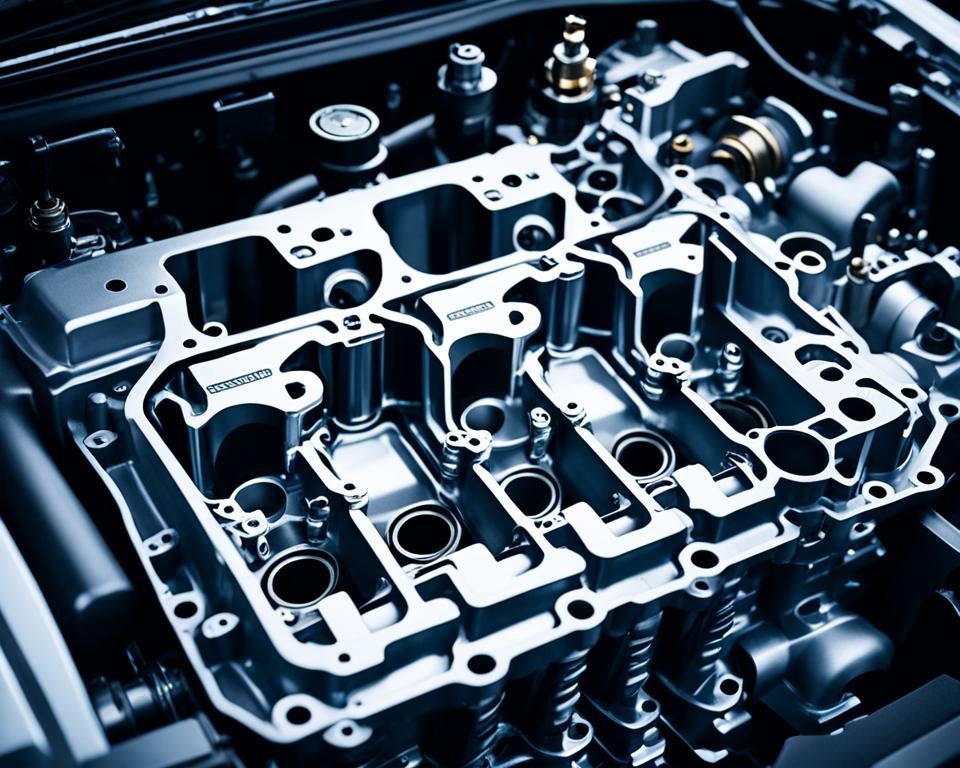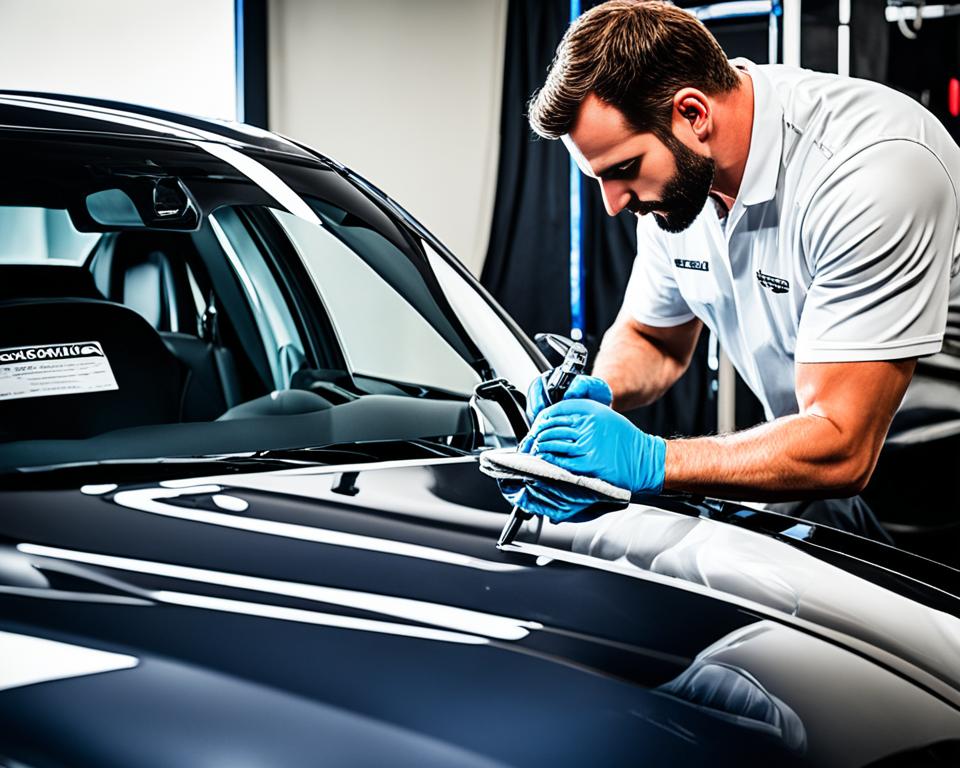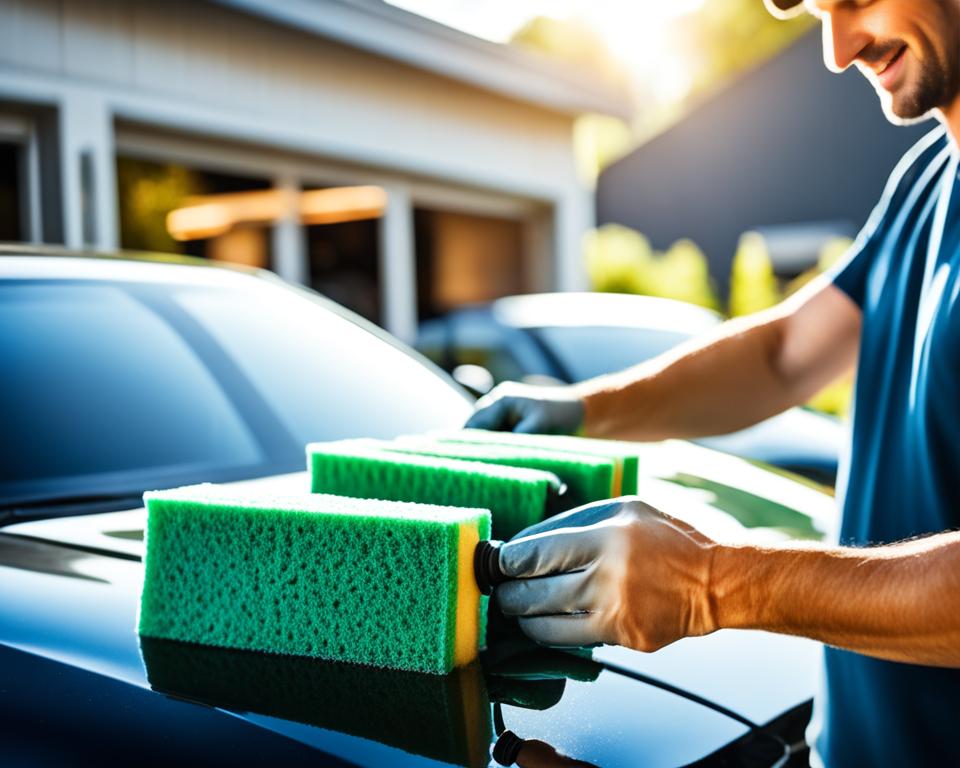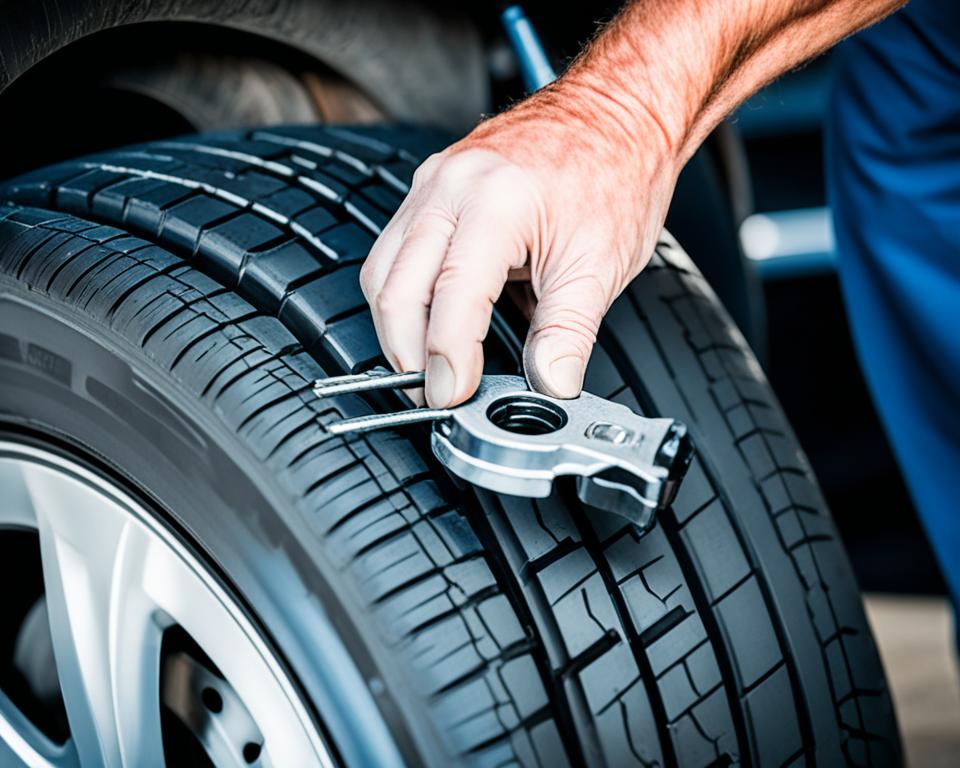Welcome to our comprehensive guide on sophisticated maintenance tips for preserving your high-performance vehicle. Maintaining a high-performance vehicle requires more than just routine maintenance. To ensure optimal performance and longevity, it’s important to incorporate advanced maintenance techniques into your car care routine. In this article, we will provide you with expert insights and strategies to help you keep your high-performance vehicle in top condition.
Whether you own a luxury sports car, a high-performance sedan, or a powerful SUV, these maintenance tips will help you take care of your vehicle and maximize its performance. From understanding your vehicle’s unique needs to developing a custom maintenance schedule and utilizing professional diagnostics, we’ve got you covered.
Follow our advice and implement these refined maintenance strategies, and you’ll not only preserve the performance and reliability of your high-performance vehicle but also prolong its life. Let’s dive in!
Key Takeaways:
- Regular routine maintenance is not enough for high-performance vehicles; implement sophisticated maintenance techniques.
- Understanding your vehicle’s unique needs and developing a custom maintenance schedule are crucial for optimal care.
- Utilize professional diagnostics to identify and address any issues promptly.
- Proactive vehicle diagnostics play a significant role in maintaining performance and reliability.
- Taking care of the engine is vital for optimal high-performance vehicle performance.
Incorporating High-Performance Car Maintenance into Your Routine
High-performance vehicles require specialized care to maintain their optimal performance. This section explores the essential aspects of high-performance car maintenance, including understanding your vehicle’s unique needs, developing a custom maintenance schedule, and the role of professional diagnostics.
Understanding Your Vehicle’s Unique Needs
High-performance vehicles have specific maintenance requirements that differ from regular cars. It’s crucial to understand these unique needs to ensure proper care and performance. By familiarizing yourself with your vehicle’s specifications and recommended maintenance guidelines, you can address its specific requirements effectively. Regularly refer to the manufacturer’s manual and consult with experts in high-performance car maintenance for tailored advice.
Developing a Custom Maintenance Schedule
A custom maintenance schedule is vital in keeping your high-performance vehicle in top condition. It allows you to address maintenance tasks promptly and systematically. Consider factors such as your driving habits, mileage, and environmental conditions when creating your maintenance schedule. Regularly inspect and maintain critical components, including the engine, transmission, suspension, brakes, and tires, to ensure optimal performance and safety.
The Role of Professional Diagnostics
Professional diagnostics play a crucial role in high-performance car maintenance. Advanced diagnostic tools and technologies can identify potential issues and abnormalities in your vehicle’s systems. Regularly scheduling professional diagnostics can help detect problems early on, preventing further damage and ensuring optimal performance. Professional diagnostics can also provide insights into performance enhancements and aftermarket modifications to optimize your vehicle’s capabilities.
The Importance of Proactive Vehicle Diagnostics
Proactive vehicle diagnostics are essential for maintaining the performance and reliability of high-performance vehicles. By analyzing electronic and control systems, addressing software updates and cybersecurity, and implementing preventive measures, you can ensure that your vehicle continues to deliver optimal performance.
Analyzing Electronic and Control Systems
The electronic and control systems in high-performance vehicles are intricate and highly sophisticated. Regularly analyzing these systems helps identify any potential issues or malfunctions before they escalate into major problems. By monitoring the performance of these critical components, you can take preventive action and maintain the efficiency and functionality of your vehicle.
The Impact of Software Updates and Cybersecurity on Performance
Software updates play a vital role in optimizing the performance of high-performance vehicles. These updates often include enhancements and bug fixes that improve the overall functionality and reliability of the vehicle’s electronic systems. Additionally, staying up to date with cybersecurity measures is crucial to protect your vehicle from potential threats and ensure the safety of its electronic control systems.
Managing Risks through Preventive Measures
Prevention is key when it comes to maintaining the performance and integrity of your high-performance vehicle. By implementing preventive measures, such as regular maintenance and inspections, you can identify and address any potential risks or issues before they can cause significant damage. This proactive approach minimizes the likelihood of unexpected breakdowns and ensures that your vehicle remains in peak condition.
| Benefits | Examples | |
|---|---|---|
| Analyzing Electronic and Control Systems |
|
|
| The Impact of Software Updates and Cybersecurity on Performance |
|
|
| Managing Risks through Preventive Measures |
|
|
Car Maintenance Tips for Optimal Engine Performance
The engine is the heart of any high-performance vehicle, and its proper maintenance is crucial for achieving optimal performance. In this section, we will provide you with essential car maintenance tips that focus specifically on engine care. By following these tips, you can ensure that your high-performance vehicle’s engine runs smoothly and performs at its best.
1. Regular Oil Changes: Oil is the lifeblood of your engine, and regular oil changes are essential to keep it running smoothly. Follow the manufacturer’s recommendations for oil change intervals, and use the recommended oil grade to maintain proper lubrication and prevent engine wear.

“Regular oil changes are essential to keep your engine running smoothly.”
2. Monitor Coolant Levels: Engine overheating can cause serious damage, so it’s important to monitor your coolant levels regularly. Check the coolant reservoir and top it up if necessary, ensuring that the coolant mixture is at the recommended level and concentration.
3. Address Warning Signs: Pay attention to warning signs that indicate potential engine problems, such as unusual noises, rough idling, or a decrease in performance. If you notice any of these signs, promptly address them by seeking professional assistance to diagnose and resolve the issue.
4. Maintain a Clean Air Filter: The air filter plays a crucial role in keeping your engine clean by preventing dust, debris, and contaminants from entering. Regularly inspect and clean or replace the air filter as needed to ensure sufficient airflow and optimal engine performance.
5. Spark Plug Maintenance: Spark plugs are responsible for igniting the fuel mixture in the engine cylinders. Over time, spark plugs can wear out or become fouled, leading to misfires and decreased performance. Regularly inspect and replace spark plugs according to the manufacturer’s recommendation to maintain optimal engine performance.
By following these car maintenance tips, you can ensure that your high-performance vehicle’s engine stays in top condition, delivering the power and performance you expect.
Expert Insight into High-Tech Automotive Protection
As high-performance vehicles continue to evolve, it is crucial to stay informed about the latest advancements in automotive protection. In this section, we will provide expert insight into high-tech automotive protection, focusing on three key areas: implementing zonal electrical and electronic architecture, crucial factors in over-the-air software management, and the contributions of AUTOSAR standardization to vehicle reliability.
Implementing Zonal Electrical and Electronic Architecture
High-performance vehicles are equipped with complex electrical and electronic systems that require effective management. Implementing zonal electrical and electronic architecture allows for better organization and control of these systems. By dividing the vehicle into multiple zones, each with its own dedicated control module, issues can be isolated, diagnosed, and addressed efficiently. This approach enhances both safety and reliability, ensuring optimal performance of the vehicle.
Crucial Factors in Over-The-Air Software Management
Over-the-air (OTA) software management has revolutionized the automotive industry by enabling remote updates and diagnostics. It allows manufacturers to seamlessly deliver software updates, bug fixes, and new features to vehicles, enhancing their performance and capabilities. However, ensuring the security and reliability of OTA software updates is vital. Robust cybersecurity measures must be in place to protect against potential threats and maintain data integrity. Additionally, efficient OTA processes and protocols are essential to minimize downtime and ensure a seamless update experience for high-performance vehicle owners.
Contributions of AUTOSAR Standardization to Reliability
The AUTOSAR (AUTomotive Open System ARchitecture) standardization is an industry-wide initiative aimed at enhancing the reliability and interoperability of automotive software. By adopting standardized software architectures, interfaces, and methodologies, high-performance vehicles benefit from improved system integration, increased scalability, and easier software updates. AUTOSAR standardization ensures that components from different suppliers can seamlessly work together, reducing complexity and enhancing overall vehicle reliability.
By staying abreast of these high-tech automotive protection advancements, high-performance vehicle owners can safeguard their investments and enjoy the utmost reliability. The implementation of zonal electrical and electronic architecture, effective over-the-air software management, and the utilization of AUTOSAR standardization paves the way for a future that prioritizes vehicle protection and reliability.
Utilizing Advanced Materials for Enhanced Durability
High-performance vehicles are built to deliver exceptional performance, and their durability is essential for consistent performance over time. One key factor in achieving long-lasting durability is the utilization of advanced materials in their manufacturing process. These advanced materials are carefully selected for their unique properties and ability to withstand the demands of high-performance driving.
Advanced materials used in high-performance vehicles include:
- Carbon fiber composites: Carbon fiber is known for its lightweight yet robust nature, providing strength and rigidity while reducing weight. Components such as body panels, aerodynamic parts, and interior trim are often made from carbon fiber composites.
- Aluminum alloy: Aluminum is used extensively in high-performance vehicles to reduce weight without compromising structural integrity. It offers excellent corrosion resistance and is commonly used in engine blocks, suspension components, and body panels.
- Titanium: Titanium is prized for its high strength-to-weight ratio and resistance to corrosion. It is commonly used in exhaust systems, suspension components, and engine valves.
- Magnesium alloys: Magnesium alloys are exceptionally lightweight and have excellent mechanical properties. They are used in various components, including transmission cases, steering wheels, and intake manifolds.
To ensure the enhanced durability of advanced materials, proper maintenance techniques should be employed. Here are some tips:
- Regular cleaning: Clean the surfaces made from advanced materials regularly to remove dirt, debris, and harmful contaminants. Use mild soap and water or cleaners specifically designed for the material.
- Protective coatings: Apply protective coatings such as ceramic coatings or specialized sealants to shield the advanced materials from UV rays, oxidation, and environmental factors.
- Inspect for damage: Regularly inspect the surfaces for any signs of damage, such as scratches, chips, or cracks. Address any issues promptly to prevent further deterioration.
- Follow manufacturer guidelines: Adhere to the manufacturer’s recommended maintenance guidelines for the specific advanced materials used in your high-performance vehicle. These guidelines provide valuable insights into the best practices for maintaining the durability of these materials.

By utilizing advanced materials and implementing proper maintenance techniques, you can ensure that your high-performance vehicle maintains its durability and continues to perform at its best. The unique properties of these advanced materials contribute to the overall performance and longevity of your vehicle, making them a crucial aspect of high-performance vehicle maintenance.
Tailoring Seasonal Car Care for High-Performance Vehicles
Seasonal changes pose unique challenges for high-performance vehicle care. To ensure that your high-performance vehicle remains in top condition throughout the year, it’s crucial to tailor your car care routine to each season. By following these expert tips and strategies, you can maintain your vehicle’s performance and protect its longevity.
Summertime Strategies for Vehicle Upholstery and Paint Protection
During the summer months, the heat and UV rays can take a toll on your high-performance vehicle’s upholstery and paint. To protect your vehicle, consider the following strategies:
- Regularly clean and detail your vehicle’s interior to remove dust, dirt, and debris that can cause wear and tear.
- Use sunshades or window tinting to minimize sun damage to your upholstery and dashboard.
- Apply a high-quality wax or paint sealant to protect your vehicle’s paint from fading and oxidation caused by UV rays.
Winter Weather Prep: Tire Pressure and Fluid Checks
Winter weather can be particularly harsh on high-performance vehicles. To prepare your vehicle for the winter season, focus on the following:
- Regularly check and adjust your tire pressure to ensure proper traction and handling in winter conditions.
- Monitor your vehicle’s fluid levels, including coolant, antifreeze, and windshield washer fluid, and refill as necessary.
- Consider switching to winter-grade oil to ensure proper lubrication and protection in cold temperatures.
Year-Round Strategies for Consistent Upkeep
Maintaining a high-performance vehicle requires year-round attention. To keep your vehicle in peak condition, follow these year-round strategies:
- Stick to a regular maintenance schedule, including oil changes, filter replacements, and scheduled inspections.
- Regularly check and maintain your vehicle’s brakes, suspension, and steering systems for optimal performance and safety.
- Keep your high-performance vehicle clean and protected from the elements with regular washing, waxing, and paint touch-ups as needed.
By tailoring your car care routine to the seasons and implementing these strategies, you can ensure that your high-performance vehicle stays in excellent condition year after year.
Strategic Detailing Techniques from Auto Care Professionals
Detailing plays a crucial role in maintaining high-performance vehicles, keeping them in impeccable condition. In this section, we will delve into the strategic detailing techniques used by auto care professionals to ensure that your high-performance vehicle looks its best. From paint correction to ceramic coatings and interior detailing, discover the professional tips and tricks that will help you achieve showroom-worthy results.

When it comes to detailing high-performance vehicles, no stone should be left unturned. Auto care professionals employ strategic techniques to polish, protect, and enhance the appearance of these impressive machines. Let’s explore some of these valuable detailing practices:
- Paint Correction: Auto care professionals utilize advanced techniques to correct imperfections and restore the shine of your high-performance vehicle’s paint. They can remove swirl marks, scratches, and other blemishes, leaving your car with a flawless finish.
- Ceramic Coatings: Applying a ceramic coating to your high-performance vehicle is like giving it a shield of protection. These durable coatings create a hydrophobic barrier that repels dirt, water, and other contaminants, making it easier to maintain the pristine appearance of your car.
- Interior Detailing: Auto care professionals pay meticulous attention to the interior of your high-performance vehicle. From deep cleaning the upholstery and carpets to restoring and protecting the dashboard and leather surfaces, they ensure that every inch of your car’s interior looks and feels luxurious.
By entrusting your high-performance vehicle to auto care professionals and embracing their strategic detailing techniques, you can maintain its beauty, preserve its value, and drive with confidence.
| Detailing Technique | Benefits |
|---|---|
| Paint Correction | – Restores the shine and smoothness of the paint – Removes swirl marks, scratches, and other imperfections – Enhances the overall appearance of the vehicle |
| Ceramic Coatings | – Provides a protective barrier against dirt, water, and contaminants – Makes cleaning and maintenance easier – Enhances the longevity of the paint and prevents fading |
| Interior Detailing | – Cleans and revitalizes upholstery, carpets, and leather surfaces – Removes stains, odors, and allergens – Restores the interior’s luxurious look and feel |
Remember, the devil is in the details, and by utilizing strategic detailing techniques from auto care professionals, you can ensure that your high-performance vehicle reflects your passion for excellence.
DIY Car Care: Small Efforts for Significant Outcomes
Taking care of your high-performance vehicle doesn’t always require expert assistance. By learning some basic maintenance skills and understanding common maintenance tasks, you can take a proactive approach to car care and ensure the longevity of your vehicle. DIY car care allows you to save money and develop a deeper connection with your high-performance vehicle.
Basic Skills Every High-Performance Car Owner Should Master
To effectively maintain your high-performance vehicle, it’s essential to master some basic skills. These skills include:
- Changing oil and filters regularly
- Inspecting and replacing spark plugs
- Checking and topping up fluids, such as coolant and brake fluid
- Replacing wiper blades
- Understanding and interpreting warning lights on your dashboard
By acquiring these skills, you’ll gain confidence in handling routine maintenance tasks and be better equipped to keep your high-performance vehicle in top condition.
Navigating Common Maintenance Tasks with Confidence
When it comes to common maintenance tasks, such as changing a tire, replacing brake pads, or checking tire pressure, having the knowledge and confidence to handle them on your own can be empowering. With a bit of guidance and practice, you can navigate these tasks with ease. Online tutorials, instructional videos, and reliable automotive resources can provide step-by-step instructions and helpful tips to ensure you complete each task effectively and safely.
To assist you in gaining a deeper understanding of common maintenance tasks, here are a few examples:
- Changing a tire: Ensure you have the necessary tools and know how to safely jack up your vehicle, remove the damaged tire, and install the spare tire.
- Replacing brake pads: Understand how to remove the worn brake pads, inspect the brake calipers, and install new brake pads effectively.
- Checking tire pressure: Learn how to use a tire pressure gauge to accurately measure and adjust the tire pressure according to manufacturer specifications.
With practice, you’ll become more proficient in these tasks, saving time and money by avoiding unnecessary visits to the mechanic.
When to Seek Expert Assistance for Vehicle Upkeep
While DIY car care is beneficial and empowering, there are instances where it’s best to seek expert assistance. Expert mechanics and technicians possess specialized knowledge and tools to diagnose and address complex issues that may arise with high-performance vehicles.
It’s advisable to seek expert assistance in the following situations:
- If you encounter an unfamiliar issue or warning light that requires advanced diagnostic equipment
- For complex repairs or replacements that require specific technical knowledge or tools
- If you lack the time, resources, or expertise to tackle a particular maintenance task
- When it comes to major engine repairs or modifications to ensure optimal performance and reliability
By knowing when to seek expert assistance, you can prevent further damage to your vehicle and ensure the best outcome for its maintenance and performance.
Incorporating DIY car care into your high-performance vehicle maintenance routine can provide significant benefits. By mastering basic skills, navigating common maintenance tasks, and seeking expert assistance when necessary, you’ll be on track to save money, extend the life of your vehicle, and maintain its high-performance capabilities.

Conclusion
Aligning Sophisticated Maintenance with Your Performance Goals
In conclusion, the implementation of sophisticated maintenance techniques is essential for preserving the performance and longevity of your high-performance vehicle. By aligning your maintenance efforts with your performance goals, you can ensure that your vehicle continues to deliver optimal performance for years to come.
Best Practices for Prolonging the Life of Your High-Performance Vehicle
To prolong the life of your high-performance vehicle, it is crucial to follow best practices in maintenance. Regularly adhere to the custom maintenance schedule tailored to your vehicle’s unique needs, including professional diagnostics. Analyzing electronic and control systems and staying up to date with software updates and cybersecurity measures will help you identify and address issues proactively.
Additionally, prioritize engine care by maintaining proper oil change intervals, monitoring coolant levels, and being attentive to any warning signs. Utilize advanced materials maintenance techniques, such as understanding their properties and employing appropriate care methods. Consider seasonal car care strategies, including upholstery protection in the summer and tire pressure checks in winter.
Furthermore, seek the expertise of professionals for strategic detailing, including paint correction, ceramic coatings, and interior detailing. By investing time and effort in mastering basic maintenance skills, you can confidently tackle common tasks on your own. When faced with complex maintenance procedures, don’t hesitate to consult experts who specialize in high-performance vehicle care.
By aligning sophisticated maintenance practices with your performance goals and adopting these best practices, you can prolong the life of your high-performance vehicle, ensuring that it continues to deliver the thrilling driving experience you desire.
